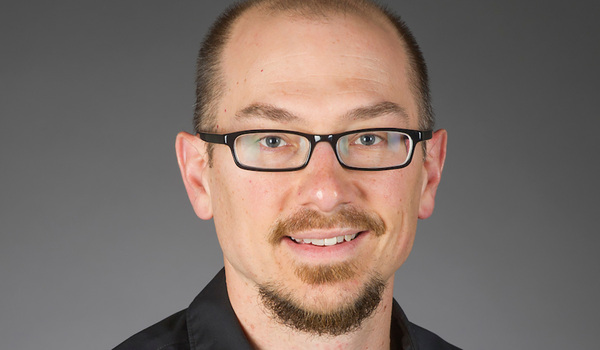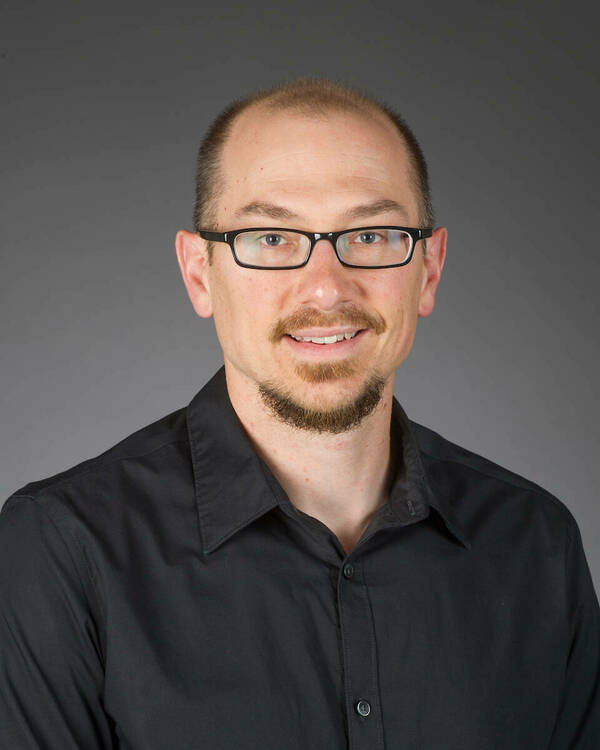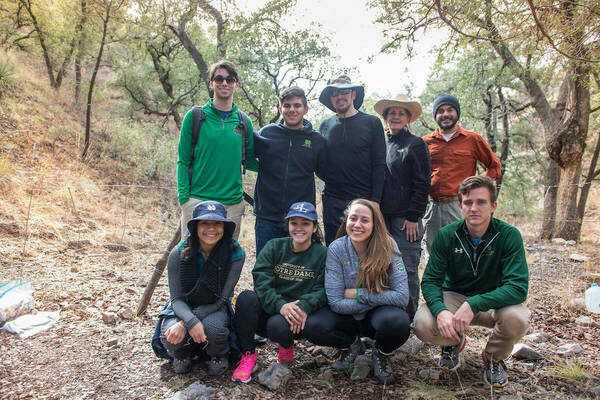

Ansari Institute Faculty Fellow Kraig Beyerlein is associate professor of sociology at the University of Notre Dame. He also serves as director of the University’s Center for the Study of Religion and Society, a community of scholars dedicated to advancing social scientific understanding of religion through empirical research, scholarly publications, intellectual interchange, and a vibrant graduate training program.
In addition, Beyerlein is a faculty fellow for the Kroc Institute for International Peace Studies and the Institute for Latino Studies, as well as a faculty affiliate for the Department of Sociology’s Center for the Study of Social Movements.
Here, he discusses how he decided to study the intersection of religion and social movements, as well as his leadership on scholarly projects exploring everything from life on the US-Mexico border to under-represented congregations in Chicago.
Q: Much of your work centers on the connections between religious traditions and social activism. What drew you to study this?
A: Part of it is my biography. I grew up in the Detroit area. My family was Lutheran and my maternal grandparents were really socially active, both in and outside the church. Early on, it occurred to me that their involvement in the church might have something to do with why they were also engaged in the broader community. So that seed was planted a long time ago because of my personal experience.
When I was an undergraduate student, I took classes in religion and social movements and liberation theology and really started to see an explicit connection between faith and calls for social justice. In graduate school, I continued this exploration in a more focused way. To this day, I remain fascinated by the ways in which religion can either mobilize or de-mobilize people for collective action.
Q: Your teaching and research explores the experience of immigrants on the US-Mexico border and the communities of faith who serve them. Talk a bit about that.
A: My first job was at the University of Arizona in Tucson, and I became involved both as a volunteer and as a researcher in progressive faith-based humanitarian groups to help save the lives of undocumented migrants crossing the desert. And when I came to Notre Dame in 2009, it was important to me to stay connected to and spread the word about these groups and the humanitarian crisis on the US-Mexico border.

For more than a decade, I’ve carried on that work while teaching here at the University. The model is a yearlong seminar—we’re in the classroom in the fall and the spring and then have an immersion trip to the southern Arizona borderlands between semesters in January. And we’re literally on the ground in these borderlands. We’re learning about border issues and being with faith and community leaders. Students are seeing social justice and religion lived out in the lives of these clergy and other religious as well as non-religious activists, and they’re witnessing the horrific consequences of border policy for undocumented migrants. I see this seminar as being directly connected to the mission of the University through Catholic social teaching.
It’s important to me from a research standpoint as well, and I’m working on a book. It’s a fascinating project. I think it’s relevant to talk about some of the core questions that I’ve grappled with as a scholar almost my entire academic life. And that is, why do some congregations but not others engage in social activism? What is it that moves congregations from sympathy to action? And, what are the consequences of mobilizing?
And what’s really interesting about the humanitarian movements in the southern Arizona borderlands is that they have many non-religious people who are involved in them. How does a progressive faith-based movement affect the lives of, say, non-religious participants? I describe this in the manuscript on which I’m working —it’s not really about orthodoxy but about orthopraxy. So non-religious people see people of faith doing the very same things that they do out in the desert, giving everything they have for the cause, and that moves them to see religion in a new way, one that goes against the familiar narrative in the United States about faith and conservatism.
Q: To your point, it seems that much media coverage of religion in the United States in recent years has focused on more conservative expressions of religion. Is it fair to say your research points to a more complicated picture?
A: I think it is unfortunate that when media outlets cover religion in the United States, much of it—and this was particularly true during the Trump era—is associated with conservative politics. And of course, that’s an important story to tell, but it’s not the whole story. And if you get beyond the sensationalism, the headlines, you're going to see religion mobilize for progressive causes, too.
Q: You have an interesting research project examining faith communities in Chicago. Could you share more about that?
A: With grants from Notre Dame Research, the University’s Institute for Scholarship in the Liberal Arts, and the Louisville Institute, I’m working with Notre Dame colleagues Ricardo Martinez-Schuldt and Matthew Sisk to map the entire population of congregations in Chicago. And then from that we will draw a random sample of congregations to do a survey, and we’re really interested in capturing their local environments and explaining why some congregations—but not others—are involved in various types of community activism, focusing on neighborhood-level characteristics.
Why are some congregations—but not others—involved in various types of community activism?
It’s crucial that not only do we get measures of religion right, but also that we take seriously the social context in which faith is practiced. That could be neighborhoods, it could be the broader congregational context, it could be the personal networks of lay people. These factors are essential to understanding the ways in which religion works in the world.
Our preliminary analyses show that preexisting lists significantly underestimate the number of congregations in Chicago. And the key thing is, it’s not random—they’re more likely to miss congregations in poor areas and communities of color. So it’s a systematic bias in the preexisting lists. We thus need to do a serious study of congregations in Chicago. And we’re using a variety of methods—since December, we’ve had undergraduate research assistants work with GIS software and Google Street View to virtually walk blocks in Chicago looking for congregations. This summer, we’re going to physically canvas the streets to see which ones are missed, to try to confirm the active status of congregations.
We’re trying to bring religion to bear on urban sociology in Chicago, which is an incredibly diverse place, religiously and otherwise.
We’ll do a random draw of congregations from this population in the fall. And then we’ll conduct surveys with faith leaders about our key question, which is: What explains why some congregations, but not others, are engaged in community efforts? We’re really looking at the intersection between internal congregational characteristics—such as theological orientation or membership composition—and neighborhood characteristics to try to explain that variation. During the following summer, we’re going to go back and conduct qualitative interviews. And we’re hoping this will be of broad interest to the University. Chicago is one of the most studied US cities in urban sociology, but religion is pretty much missing. So we’re trying to bring religion to bear on urban sociology in Chicago, which is an incredibly diverse place, religiously and otherwise.
Originally published by at ansari.nd.edu on April 21, 2022.